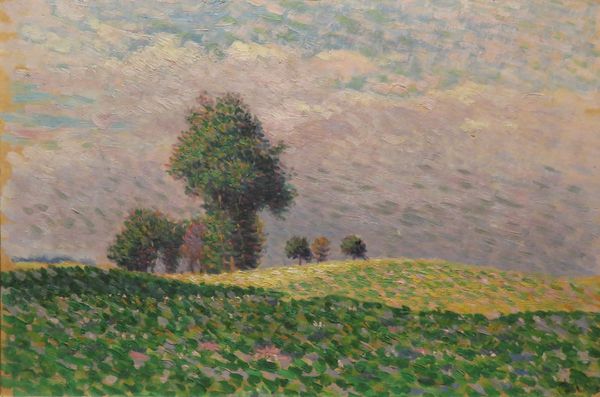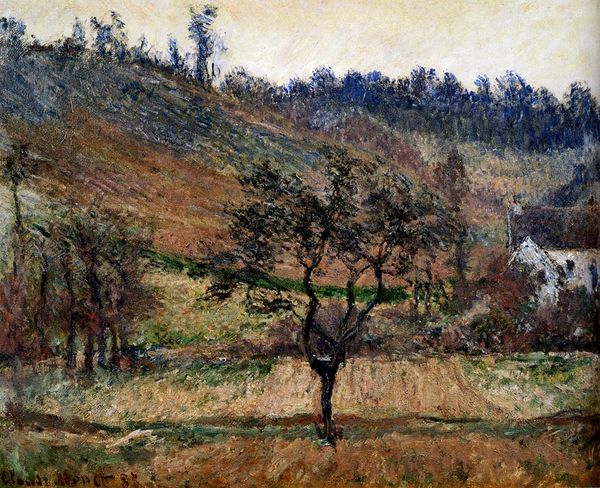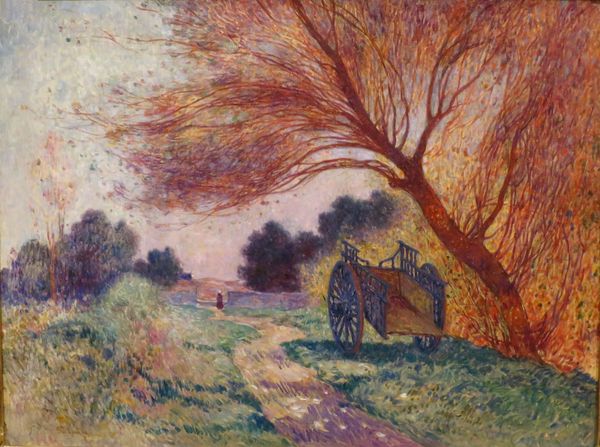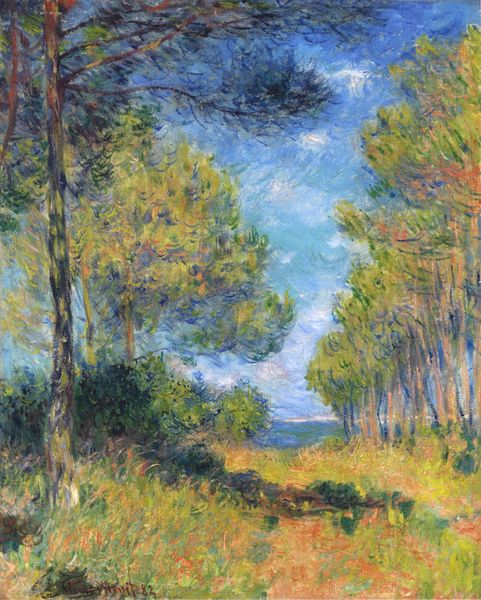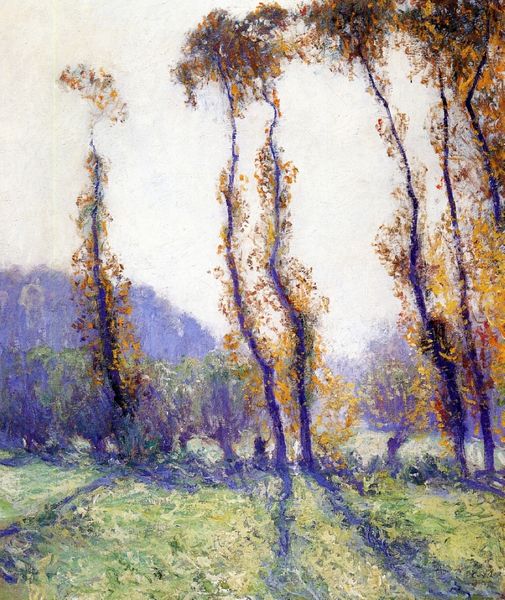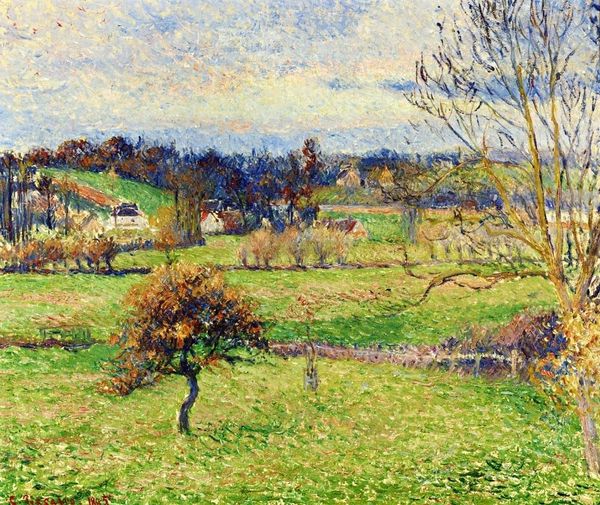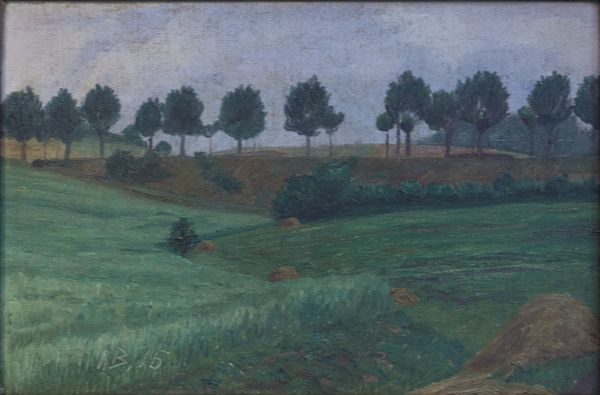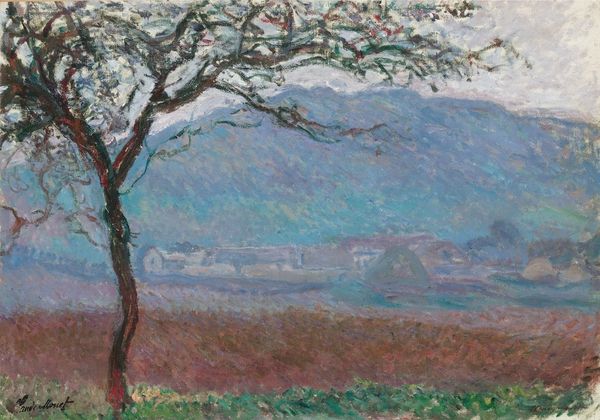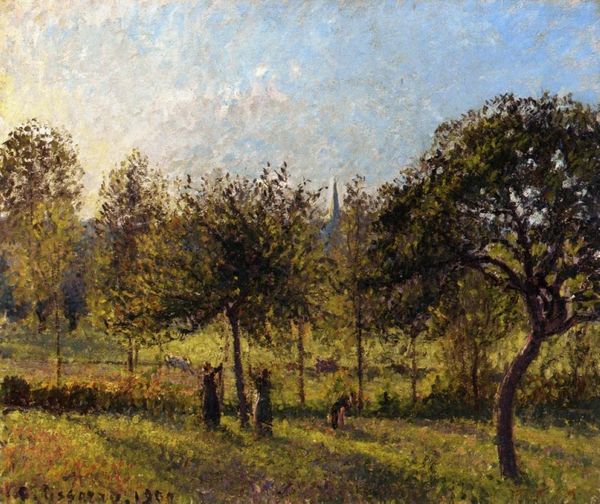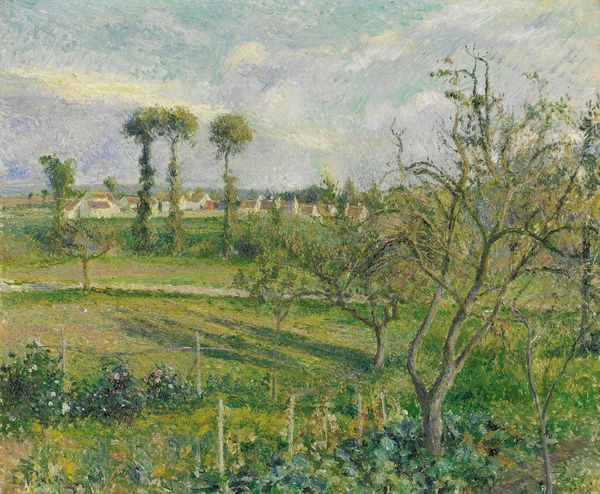
Copyright: Public domain
Theodore Robinson's painting, "The Edge of the Forrest" is made with oil paints on a canvas support. Notice the materiality of the brushstrokes themselves. They are not blended into a smooth surface, but instead are left visible, creating texture that enlivens the scene. Robinson’s application of paint is directly linked to the Impressionist movement, and the painting gives us insight into the ways in which the industrial revolution influenced the art world. The readymade paints in tubes, manufactured in factories, allowed artists to leave the studio and paint outdoors in the *plein air* tradition. Consider how this way of working is a product of its time, reflecting the burgeoning consumer culture and the shift from handmade to machine-made goods. The painting is not just a representation of nature, but also a record of a specific way of engaging with it, made possible by the technologies of the era. Paying attention to materials and processes helps us to fully understand an artwork’s cultural and historical significance.
Comments
No comments
Be the first to comment and join the conversation on the ultimate creative platform.
